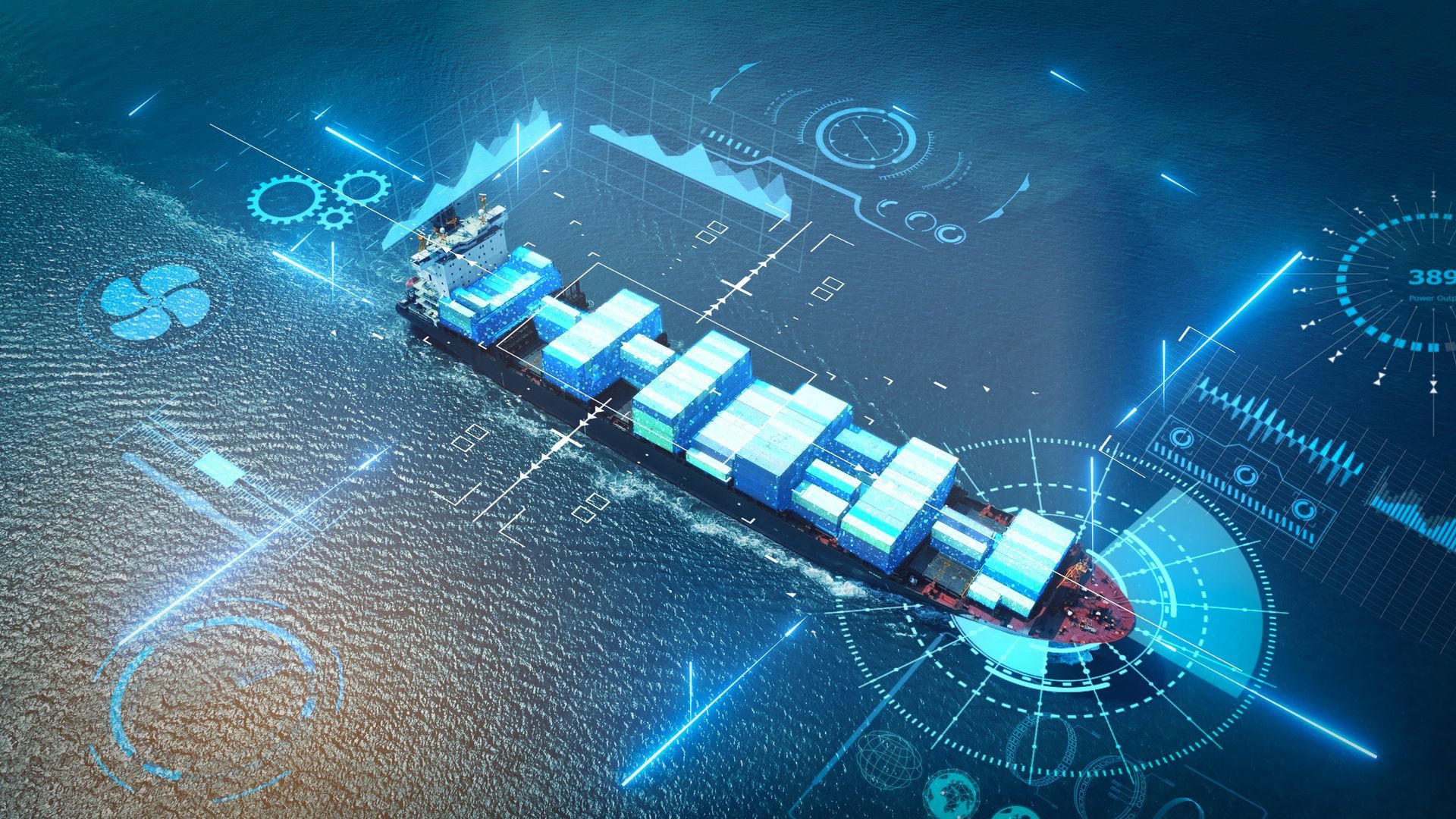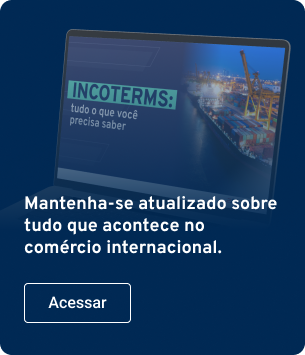Stay up to date with the latest news and articles from the world of logistics
Discover how Allink is transforming the logistics landscape by checking out the knowledge shared by our team of experts below.

In the global maritime transport landscape, the ECA Reg Surcharge (or Emission Control Area Regulation Surcharge ) has gained prominence as one of the main factors affecting logistics costs. With growing concerns about the environment and public health, the International Maritime Organization (IMO) has established stricter regulations to control pollutant emissions from ships. These regulations, applied in specific areas known as ECAs (Emission Control Areas) , have resulted in the creation of a surcharge that directly affects maritime transport operations. In this article, we will explore what the ECA Reg Surcharge is, why it is charged, and how it impacts logistics operations, especially for freight forwarders and customs brokers. What is the ECA Reg Surcharge? The ECA Reg Surcharge is a fee applied by shipping lines to cover additional costs associated with emission control regulations in designated ECAs . These areas are established by the IMO and have stricter restrictions on the emissions of sulfur oxides (SOx) , nitrogen oxides (NOx) , and other particles from vessels. The surcharge is a way to compensate for the high operating costs in these areas, which require the use of low-sulfur fuels or the installation of emission reduction equipment . The ECA Reg Surcharge is a direct reflection of the global shift towards more sustainable practices in maritime transport. With the implementation of IMO 2020 , which reduced the sulfur limit in fuel from 3.5% to 0.5% , shipping companies had to adapt quickly, leading to additional costs that are passed on to customers through this surcharge. Key Information About ECAs ECAs are specific areas where emission regulations are stricter. Currently, there are three main ECAs: The North Sea The Baltic Sea The North American ECA Each of these areas has distinct geographical and regulatory characteristics, but they all share the goal of reducing air pollution from ships. The North Sea includes the North Sea and adjacent parts of the Atlantic Ocean , covering busy maritime routes between the UK, mainland Europe, and Scandinavia . The Baltic Sea encompasses the entire Baltic region , including countries such as Sweden, Finland, Germany, Denmark, and Poland . The North American ECA covers coastal areas up to 200 nautical miles off the east and west coasts of the US and Canada . These areas were selected due to high maritime traffic and proximity to coastal populations , where the impact of pollutant emissions is more significant. The enforcement of stricter regulations in these areas aims to protect public health and the environment but also leads to higher costs for shipping companies . Why Is the Surcharge Applied? The ECA Reg Surcharge is charged to compensate for the additional costs that shipping companies incur when operating within ECAs . These costs are directly related to the requirement to use low-sulfur fuels or to install emission reduction equipment , such as exhaust gas cleaning systems (scrubbers) . Low-sulfur fuel, such as Marine Gas Oil (MGO) , is significantly more expensive than Heavy Fuel Oil (HFO) , which has traditionally been used in ships. Additionally, the installation of scrubbers requires high initial investments and ongoing maintenance , further increasing operational costs. IMO 2020 brought a major shift by reducing the sulfur content in fuel from 3.5% to 0.5% . This change was implemented to reduce sulfur oxide emissions , which are harmful to human health and the environment. However, the transition to cleaner fuels and the installation of emission reduction equipment have led to higher costs , which are passed on to customers through the ECA Reg Surcharge . How the Surcharge Impacts Shipments and Logistics Operations The ECA Reg Surcharge has a significant impact on logistics operations , especially for freight forwarders and customs brokers . Since this surcharge is applied to routes passing through ECAs , transport costs can vary depending on the chosen route . This requires freight forwarders and brokers to carefully analyze routes and applicable regulations to correctly calculate shipping costs. Companies that invest in emission reduction technologies , such as scrubbers , may gain a competitive advantage as they can continue using HFO , which is cheaper, while others must use more expensive fuels like MGO . This cost difference can influence customer decisions when selecting a shipping company. Another key impact of the ECA Reg Surcharge is the need for more detailed logistics planning . Companies must consider not only the direct costs of the surcharge but also potential delays and additional costs related to installing emission reduction equipment or switching to cleaner fuels . This can result in an overall increase in logistics costs , which must be efficiently managed to maintain market competitiveness . Conclusion The ECA Reg Surcharge is now a reality in maritime transport, reflecting the global shift toward sustainable practices and stricter regulations . For freight forwarders and customs brokers , understanding the impact of this surcharge is essential to ensuring efficient and competitive logistics operations . The ECA Reg Surcharge not only affects shipping costs but also requires detailed logistics planning and a deep understanding of applicable regulations . As the maritime transport sector continues to evolve in response to environmental and regulatory pressures , logistics professionals must be prepared to handle the challenges and opportunities ahead . The ECA Reg Surcharge is just one example of how global changes are shaping the future of maritime transport . Check out our freight quotation checklist to ensure your shipping operations align with industry best practices .

The National Logistics Plan (PNL) 2035 is a strategic document designed to guide the development of Brazil’s transportation system through 2035. For freight forwarders and customs brokers , understanding the guidelines and projections of this plan is essential to prepare for changes in the logistics sector and ensure efficiency in transportation and foreign trade operations. In this article, we will explore the key points of PNL 2035 , highlighting how it impacts the work of these professionals. What is the National Logistics Plan 2035? The PNL 2035 is a strategic planning instrument developed by the Logistics Planning Company (EPL) in partnership with the Ministry of Infrastructure . Its primary objective is to integrate all modes of transportation (road, rail, waterway, and air) and provide a long-term vision for developing Brazil’s logistics infrastructure. The plan aims to reduce logistics costs, increase efficiency, and promote sustainability in transporting goods and people. The PNL 2035 is part of the Integrated Transport Planning (PIT) concept, which aligns different planning tools to ensure that strategic, tactical, and operational decisions are made coherently and holistically. This means the plan not only identifies bottlenecks and opportunities but also proposes solutions that can be implemented through public and private investments . Why is PNL 2035 Important for Freight Forwarders and Customs Brokers? For freight forwarders and customs brokers , PNL 2035 is a valuable tool because it offers a clear view of trends and changes in the transport sector. Based on the plan’s projections and scenarios, these professionals can: - Anticipate demand - Optimize routes - Improve operational efficiency Additionally, the plan provides insights into how infrastructure and regulatory changes may impact freight transportation, particularly regarding intermodality and sustainability . Key Objectives of PNL 2035 PNL 2035 is based on principles and guidelines established by the National Transport Policy (PNT) . Its main objectives include: Providing an accessible, efficient, and reliable transport system for the mobility of people and goods. Ensuring operational safety across all transport modes. Promoting international integration and cooperation with neighboring countries. Acting as a driver of Brazil’s socioeconomic and sustainable development. These objectives are crucial for freight forwarders and customs brokers , as they directly impact how goods are transported and cleared . For example: International integration can facilitate foreign trade. Operational safety helps reduce risks and costs associated with cargo transportation. How Does PNL 2035 Impact Intermodality? Intermodality is one of the pillars of PNL 2035 . The plan promotes the integration of different transport modes —road, rail, and waterways—to increase efficiency and reduce costs. For freight forwarders , this means: Optimized routes Shorter delivery times More cost-effective transportation options For example, coastal shipping (cabotage) can be combined with road transport to reduce costs and increase efficiency. PNL 2035 projects significant investments in port and rail infrastructure , expanding intermodal options available to freight forwarders. Future Scenarios and Projections of PNL 2035 PNL 2035 presents nine future scenarios that simulate different configurations of Brazil’s transportation system through 2035. These scenarios consider factors such as: Infrastructure investments Regulatory changes Technological advancements For freight forwarders and customs brokers , understanding these scenarios is crucial to preparing for industry changes. 🔹 Scenario 1: Ongoing Projects Considers only infrastructure projects already underway or budgeted in the 2019-2023 Multi-Year Plan (PPA) . Impact: Minimal changes, with gradual improvements in logistics infrastructure. 🔹 Scenario 2: Planned Projects Includes all projects from Scenario 1 , plus short-term projects under planning or study . Impact: Potential new business opportunities , especially in regions where logistics infrastructure will expand . 🔹 Scenario 3: Transformative Economic Context A more ambitious version of Scenario 2 , considering additional policies to accelerate economic development. Impact: Increased demand for logistics services , benefiting freight forwarders. 🔹 Scenario 4: Planned Projects + BR do Mar Includes the impact of the BR do Mar program, which promotes cabotage shipping . Impact: Lower costs and expanded maritime transport routes for freight forwarders. 🔹 Scenario 5: Planned Projects + Technological Innovations Considers emerging technologies such as autonomous vehicles, artificial intelligence, and big data. Impact: Faster customs clearance processes and greater operational efficiency for brokers. 🔹 Scenario 6: Private and Public Sector Proposals Includes infrastructure proposals from the private sector and civil society during public consultations. Impact: Expanded private-sector investment in logistics. 🔹 Scenario 7: Planned Projects + Railway Deregulation Considers the impact of the new railway regulatory framework , allowing private operators to manage railway segments. Impact: Expanded rail network , lower logistics costs for heavy cargo. 🔹 Scenario 8: Comprehensive Transformative Scenario Combines all previous scenarios , creating a transformative economic and logistics context. Impact: The most comprehensive vision of logistics changes through 2035. 🔹 Scenario 9: Key Opportunities for National Transport Development Identifies the most strategic projects and actions based on all previous scenarios. Impact: Helps freight forwarders and customs brokers identify the best investment opportunities . Impact of BR do Mar on Cabotage The BR do Mar is one of the most relevant projects in PNL 2035 for freight forwarders and customs brokers . Its goal is to reduce costs and expand coastal shipping routes , which currently represent only 9% of Brazil’s logistics matrix but have significant growth potential. 🚢 Benefits of BR do Mar for Freight Forwarders: 💰 Cost Reduction : Cabotage is 60% cheaper than road transport and 40% cheaper than rail transport . ⚡ Greater Efficiency : It enables large-volume cargo transport over long distances. 🌱 Sustainability : Cabotage emits 6x less CO₂ than road transport. How to Prepare for PNL 2035 Changes? PNL 2035 provides an integrated, strategic vision for the development of Brazil’s transport system . To take full advantage of its opportunities , professionals must: ✅ Stay informed about infrastructure investments and regulatory changes . ✅ Adapt to new logistics technologies and intermodal transport strategies . ✅ Explore cost-effective and sustainable solutions like cabotage shipping . 🔎 Want to optimize your logistics operations under PNL 2035? Check out our guide on evaluating NVOCC services and discover how to enhance efficiency and reduce costs in international shipping! 🚀
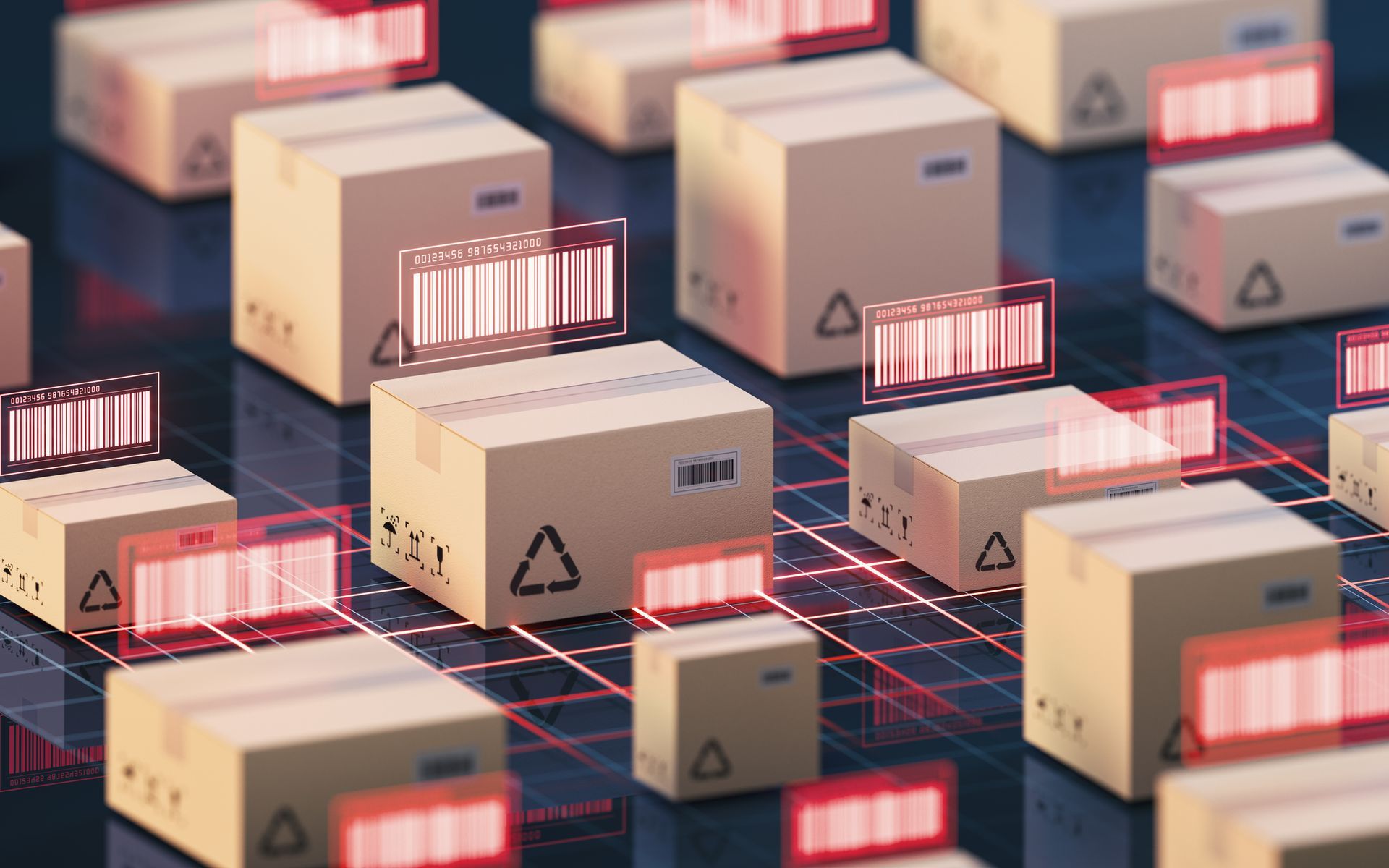
Cargo handling at maritime terminals is a complex and intense operation. In Brazil, the Port of Santos alone is responsible for approximately 40% of the total cargo volume moved in the country. With such a high flow of goods, proper organization and identification of merchandise are crucial to avoiding logistical issues. The absence or improper labeling of cargo makes locating shipments more difficult and can lead to damages, financial losses, and significant delays. Understanding the high volume of operations at these terminals is essential to realizing that “it’s not just your cargo” in circulation. Therefore, ensuring accurate labeling is a fundamental measure to maintain efficiency and security in port logistics. The Dynamics of Maritime Terminals Maritime terminals operate in a coordinated manner to receive, store, and ship large volumes of export and import cargo. Scheduling delivery windows is essential to avoiding endless lines, as used to happen during harvest seasons. Even with the efficiency provided by scheduling, deliveries at terminals must be extremely well-organized to meet deadlines. Terminals work with strict stuffing and shipment deadlines, where every minute counts to prevent congestion and delays. Proper identification of goods becomes critical in this scenario, as it allows operations to run smoothly. Without clear identification, goods may be placed in “lost and found” areas, awaiting manual identification, which can compromise the entire logistics schedule. Challenges in Cargo Handling One of the main challenges faced in maritime terminals is the discrepancy between the declared information on documents and the actual characteristics of the cargo. Differences in dimensions, weight, or type of merchandise can lead to considerable delays and additional costs. Another recurring issue is the delivery of goods without a proper reservation or scheduled window, leading to immediate rejection by the terminal. Additionally, cargo is at risk of damage when there are no clear instructions regarding fragility or stacking. To minimize these challenges, labeling plays a crucial role in ensuring that all relevant information is easily accessible throughout the entire process. Who Is Responsible for Labeling? The responsibility for labeling and identifying cargo lies with the exporter, who is the party most familiar with the product’s characteristics and the details of the transaction, including the importer, destination, and other factors. The symbols on packaging indicate how products should be handled and stored by logistics operators. They serve as guidance to ensure that goods reach their destination intact and in the desired condition. This variety of symbols can be printed directly on the boxes or attached using high-quality labels that do not detach during handling. Not everyone involved in the logistics process knows what is inside the packages, making these symbols essential. While they do not specify the product itself, they dictate how it should be handled to prevent damage, financial losses, and even workplace accidents. There is no global regulation for using symbols on cardboard boxes. However, in Brazil, standardization follows NBR 7500 . Why Is Labeling Essential? Cargo labeling is a fundamental requirement for ensuring organization and safety in port operations. When goods arrive at a terminal without proper identification, several problems can arise, including: Difficulty tracking cargo, leading to delays and missed deadlines. Incorrect storage, which compromises the integrity of the merchandise. Errors in stuffing, increasing the risk of cargo misplacement or loss. Damage due to a lack of clarity on handling instructions. Moreover, in cases of damage, improper identification of handling requirements can jeopardize insurance claims, as there is no proof that the cargo required special handling. Proper labeling should include information such as reservation number, origin, destination, exporter and importer details, and specifications regarding stacking and fragility. These details enable terminals to handle shipments accurately, minimizing errors. Benefits of a Well-Structured Process for Freight Forwarders and Brokers For freight forwarders and customs brokers, efficient labeling offers numerous benefits that streamline operations and enhance reliability. When cargo is properly labeled, the terminal delivery process becomes faster and more organized. Operational efficiency allows freight forwarders to meet shipping deadlines with greater security, avoiding fines and additional costs. Additionally, reducing handling errors minimizes the risk of damage and incidents, ensuring safer transportation. Another key aspect is improved communication between different links in the logistics chain. With clear and accessible information, terminals can operate more efficiently, reducing the need for corrective actions. Best Practices for Labeling To ensure effective labeling, several best practices should be followed: Include All Relevant Information – Labels should contain details about dimensions, weight, cargo type, and special handling instructions. Use Durable and Secure Labels – Labels must be well-attached to packaging to prevent them from peeling off during transport. Using materials that resist adverse conditions like humidity and friction is essential. Regularly Review Labeling Information – Errors in labeling can result in rework and delays, disrupting the entire logistics schedule. Investing in proper labeling is a strategic measure for exporters looking to ensure efficiency and safety in operations. In a competitive environment where every second counts, small details make all the difference in achieving successful logistics operations.
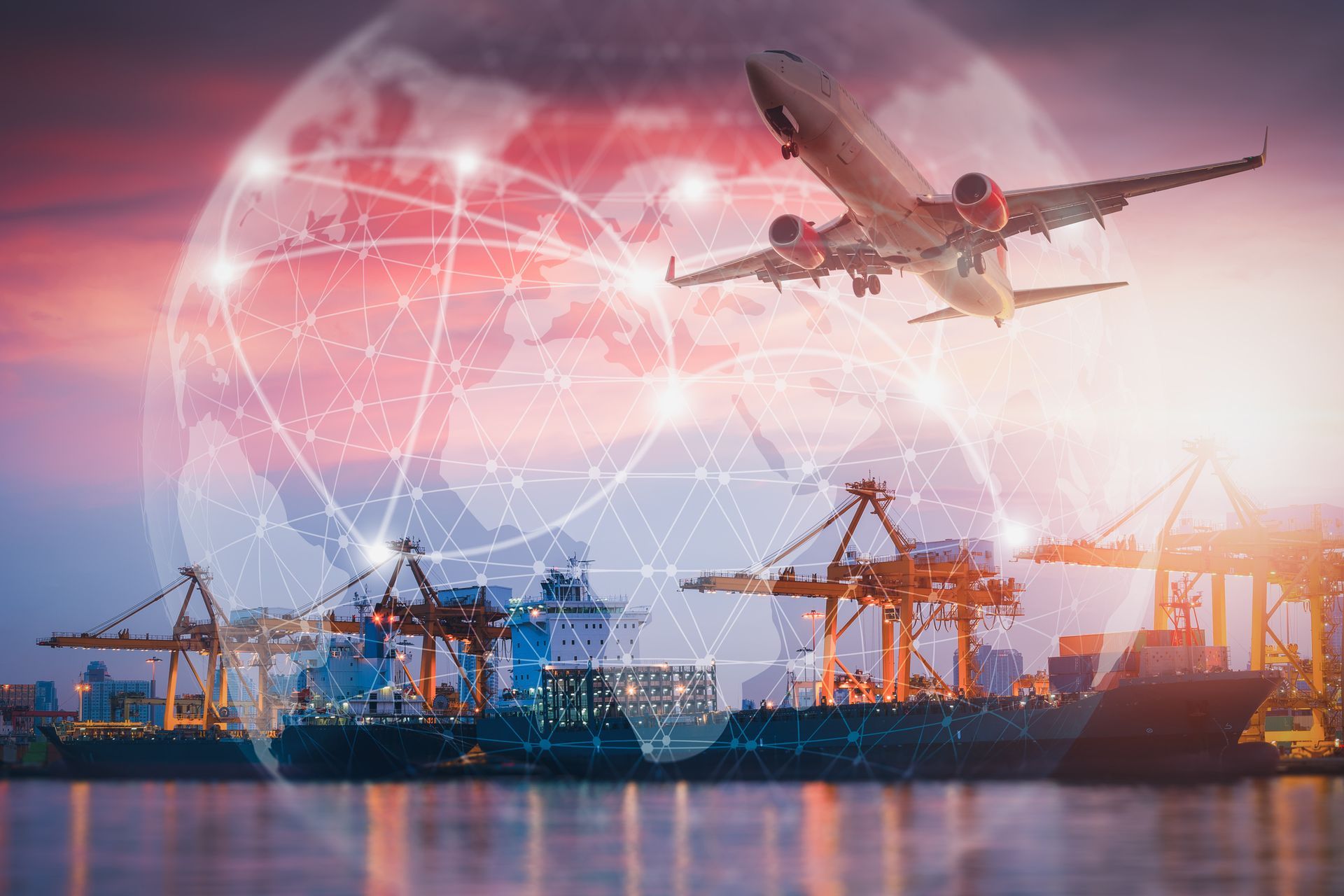
International transport is the backbone of global trade, enabling goods to move between countries safely and efficiently. It encompasses the physical movement of goods, from origin to final destination, under contracts that define the obligations and costs of the involved parties. Understanding its modalities, transport types, navigation methods, costs, and the role of Incoterms is essential for any freight forwarder or shipper. This article delves into these aspects, with a focus on maritime transport and FCL and LCL operations. What is International Transport? International transport refers to the movement of goods between countries, governed by internationally recognized contracts. This type of transport begins at the production or storage site and ends at the destination agreed upon by the parties. During this process, two types of freight are identified: Origin Inland Freight : Transfers the cargo to the initial export point. Destination Inland Freight : Moves the cargo from the unloading point to the final customer. Selecting the most suitable transport mode depends on factors such as cargo weight, delivery urgency, shipping and receiving points, service availability, and cost. International transport requires careful analysis of these elements to ensure efficiency and cost-effectiveness. Modalities and Types of International Transport The modalities of international transport offer flexibility to meet diverse logistical needs: Modal : Involves only one mode of transport throughout the operation. Intermodal : Uses two or more modes in a single operation, but with separate contracts. Multimodal : Involves multiple modes under a single contract, centralizing contractual responsibility for the entire route. These options provide exporters and importers with greater control over costs, deadlines, and risks, depending on the specifics of each operation. Various transport modes are utilized in international transport, each with its own advantages and disadvantages: Air Transport Recommended for high-value or perishable goods due to its speed. It requires rigorous documentation, such as the Air Waybill (AWB), and incurs higher costs. Maritime Transport The most commonly used mode in international trade due to its low cost and capacity to carry large volumes. The Bill of Lading is crucial for ensuring the legal security of the operation. Road and Rail Transport Suitable for short and medium distances, particularly between neighboring countries. However, challenges such as physical borders and road conditions may arise. Inland Waterway Transport Useful for regions with hydrographic networks, offering an economical solution for both domestic and international transportation. Choosing the right mode depends on specific cargo requirements, balancing efficiency, safety, and cost. Forms of Navigation In maritime transport, there are three main forms of navigation: Cabotage : Conducted between ports within the same country, ideal for domestic cargo. Inland Navigation : Performed on internal waterways for domestic or international routes. Deep Sea Navigation : Connects Brazilian and foreign ports, serving as the primary method for international trade. Maritime companies offer different services: Regular : Fixed and pre-determined routes, providing predictability for exporters. Irregular : Flexible routing with prices depending on commercial opportunities at each port. Chartering : Suitable for large volumes, allowing partial or full vessel utilization. These navigation methods and services help logistics operators maximize efficiency and reduce costs based on demand and the geographic location of ports. Freight in International Maritime Transport: Key Aspects Maritime transport is widely chosen for its competitive cost and capacity to move large volumes. Freight calculation is based on cargo weight (tonnage) or volume (cubic meters), with the shipping company selecting the most advantageous criterion. Costs are also influenced by factors such as the distance between shipping and receiving ports, port location, cargo type, and fragility. The Role of Insurance in International Transport Although not mandatory, insurance in international transport is highly recommended to mitigate losses in case of damage or accidents. Premiums are calculated based on cargo type, transport mode, packaging, perishability, destination, and coverage period. In maritime transport, containers lower insurance costs compared to loose cargo. In air transport, insurance premiums are typically half the cost of land and sea modes, offering an advantage depending on the type of goods. The Importance of Incoterms Incoterms (International Commercial Terms) are international rules standardizing buyer and seller obligations in foreign trade operations. They define who bears costs such as freight, insurance, and port expenses, as well as the point where risk transfers. For example, FOB (Free on Board) and CIF (Cost, Insurance and Freight) are commonly used in maritime transport, ensuring clarity in the responsibilities of each party. Proper use of Incoterms prevents disputes and facilitates logistical planning. How to Choose the Ideal Form of International Transport Selecting the ideal mode requires a careful assessment of cargo needs, delivery deadlines, costs, and risks. For urgent or high-value cargo, air transport may be preferable, while maritime transport is ideal for large volumes. Additionally, FCL (Full Container Load) operations, where the container is occupied by a single company’s cargo, and LCL (Less than Container Load) operations, where different companies share the same container, offer flexibility to optimize costs and maximize efficiency. Understanding the specifics of international transport is crucial for companies aiming to expand their global operations. Strategic use of Incoterms, insurance, and choosing between FCL and LCL are fundamental for safe and efficient operations. Want to learn more? Check out our eBook on Incoterms, complete with an illustrative table to simplify their application in international transport.
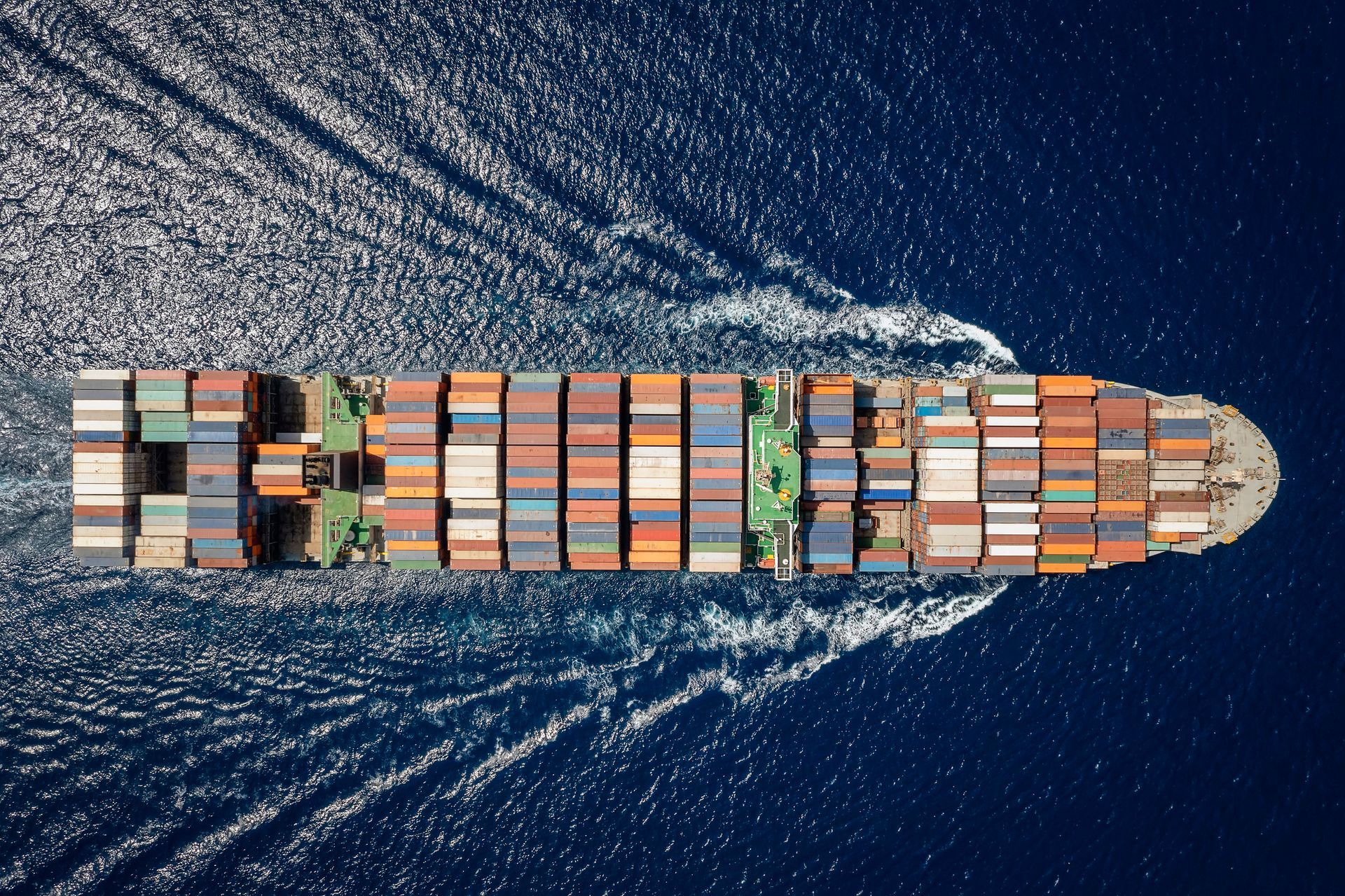
The maritime transport sector, one of the key drivers of the global economy, is undergoing a transformation that will shape its future in the coming years. With a significant role in international trade, this segment is adapting to new demands driven by economic, environmental, and technological factors. The 2025 Ocean Outlook report highlights trends that will define the market through 2025, urging freight forwarders and shippers to prepare for upcoming challenges and opportunities. In this article, we will explore these trends and understand how they will influence the maritime transport sector, based on detailed analyses and expert projections. Changes in Global Maritime Trade Global maritime trade is experiencing profound changes, influenced by geopolitical tensions, reconfigured routes, and new trade policies. The impact of these changes is directly reflected in strategic routes like the Red Sea and the Suez Canal, which have undergone adjustments due to regional disputes. According to the report, TEU/mile demand on these routes has fluctuated significantly, with variations ranging from 3% to -11%, creating an environment of uncertainty for logistics operators. Furthermore, the forecast of a mere 3% growth in global container demand by 2025—following a record year in 2024—emphasizes the need for more dynamic strategies to mitigate the impacts of this slowdown. Companies must adjust their operations to respond to this new reality by adopting more efficient solutions that ensure resilience and competitiveness in the international market. Technological Innovations and Sustainability Pressure for Sustainability and Reduced Emissions Sustainability is at the heart of discussions about the future of the maritime sector. Environmental regulations are becoming increasingly stringent, especially in the European Union, where the Emissions Trading System (ETS) will expand to cover 70% of CO₂ emissions by 2025. This compels companies to invest in sustainable technologies and alternative fuels, such as biofuels and auxiliary wind energy. This shift toward more sustainable practices is not just a regulatory requirement but also a strategic opportunity. Companies that invest in ESG (Environmental, Social, and Governance) initiatives will gain a competitive edge, attracting customers and investors who value environmentally responsible efforts. Moreover, adopting green technologies can lead to significant operational savings as regulations increasingly penalize polluting operations. Technological Innovations and Digitalization Technology is playing a crucial role in modernizing the maritime sector. The integration of digital solutions such as IoT, artificial intelligence, and big data is transforming logistics management, enabling real-time tracking, more accurate forecasts, and enhanced operational safety. These advancements not only increase efficiency but also reduce operational costs, making operations more agile and competitive. Autonomous ships are emerging as a near reality, driven by the need to reduce costs and improve operational efficiency. Automation can revolutionize the sector, minimizing human error and optimizing resource utilization. Companies that embrace these technologies early will lead the next phase of global maritime logistics. Climate Change Impact Climate change poses a growing challenge to maritime transport. Extreme weather events, such as storms and hurricanes, along with rising sea levels, are altering routes and impacting the safety of ports worldwide. The report emphasizes the need for companies to invest in more resilient infrastructures and develop contingency plans to address these challenges. Adaptability will be a key competitive differentiator. Companies that anticipate the effects of climate change will be better positioned to ensure operational continuity and minimize losses, while those that fail to adapt may face significant disruptions and financial setbacks. Transformations in Supply Chains The global supply chain is being restructured to become more resilient and less vulnerable to disruptions. The COVID-19 pandemic exposed significant weaknesses, prompting companies to reevaluate their logistics networks and seek regional alternatives to reduce risks. This new approach is supported by technologies that provide greater visibility and control over the supply chain. Digital solutions enable precise tracking of goods and more efficient communication with logistics partners, resulting in more agile and effective operations. Companies that adopt these innovations will be better prepared to face future crises and ensure the continuity of their operations. Growth in New Markets and Opportunities The push for sustainable practices is driving the emergence of new business models in the maritime sector. Companies are exploring concepts such as the circular economy, ship recycling, and eco-friendly fleets to meet the demand for greener operations. Strategic partnerships between transport and technology companies are also creating innovative solutions that address market demands and environmental regulations. These initiatives not only respond to regulatory pressures but also offer significant competitive advantages. Models based on energy efficiency and sustainability are becoming essential to maintain relevance in the global market, creating new opportunities for companies that adopt innovative practices. Impact of Regulatory and Economic Policies Regulatory policies are playing an increasingly significant role in the sector. The entry into force of the Hong Kong International Convention , scheduled for 2025, will require countries to adopt strict measures for the safe recycling of ships, significantly impacting global maritime operations. Brazil, for example, is preparing to integrate these regulations into its national legislation, which will require substantial adjustments by local companies. These changes also have economic implications, as companies that fail to comply with the new regulations may face sanctions and challenges in operating in international markets. Conversely, those that invest in regulatory compliance will be better positioned to explore new opportunities and strengthen their global presence. Challenges and Risks for 2025 Despite predictions of stable freight rates, the maritime sector will continue to face substantial economic challenges. Rate volatility, political instability, and regulatory pressures will create a challenging environment for companies. Adaptability will be essential to overcoming these obstacles. Companies that leverage predictive analytics and data-driven strategies will gain a competitive edge, efficiently adjusting their operations and minimizing financial risks. Conclusion Maritime transport in 2025 will be shaped by a balance between innovation, sustainability, and resilience. Companies that adapt to these transformations will be well-positioned to thrive in an increasingly dynamic and competitive global market. The ability to anticipate trends and adopt innovative practices will be crucial to ensuring sustainability and continuous growth in this strategic sector. Want to learn more? Check out our article on international maritime freight and understand the recent price fluctuations.
Stay informed about foreign trade
Subscribe to our newsletter and receive free weekly updates about the world of logistics.


